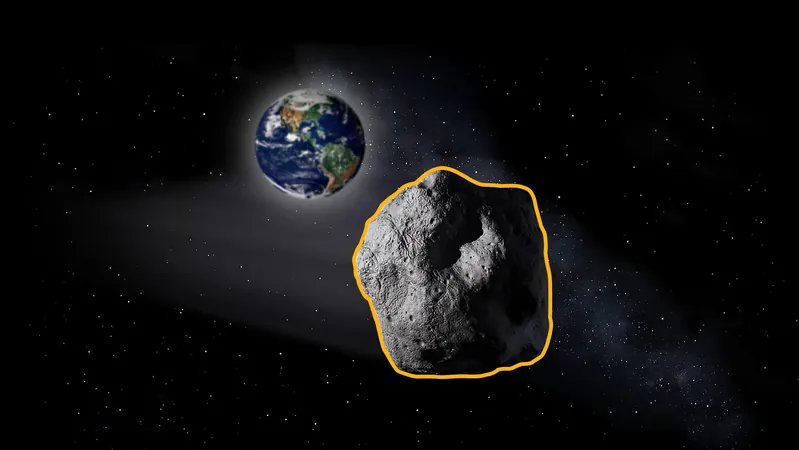
Asteroids: The Daily Passengers of Our Solar System – Are We Ready for a Close Call?
2024-11-24
Author: Rajesh
When it comes to space threats, the infamous "God of Destruction," the asteroid Apophis, has made headlines due to fears of a potential collision with Earth in 2029. However, according to recent analyses from Space.com, the odds of this massive rock actually hitting our planet stand at an astonishingly low 1 in 2 billion—a statistic that offers little to fret about for now!
Every year, NASA's advanced telescopes discover over 3,000 near-Earth asteroids (NEAs), and thanks to improving technology, this number is expected to rise even further. As of mid-November 2023, over 36,000 NEAs have been cataloged.
This year has already seen several significant close encounters with large asteroids, including: - **January 27:** Asteroid 2024 BJ, approximately 121 feet wide, passed within 220,000 miles of Earth. - **June 27:** Asteroid 2011 UL21, ranging between 1.1 and 2.4 miles in diameter, came as close as 4.1 million miles. - **June 29:** Asteroid 2024 MK, around 500 feet wide, was just 184,000 miles away. - **September 15:** Asteroid 2024 ON, measuring 720 feet in diameter, passed at a distance of 620,000 miles.
Despite many of these near-misses occurring millions of miles away, scientists continue to track these celestial bodies to gain insights into their trajectories and assess potential future threats. NASA's projections indicate that larger asteroids, those exceeding 330 feet, strike Earth approximately every 10,000 years. Luckily, no significant asteroid impacts are anticipated in the near future.
But what exactly are asteroids and where do they come from? Most asteroids are found in the main asteroid belt situated between Mars and Jupiter, a region densely packed with billions of asteroids across a span of 92 million miles. Their sizes can vary widely: some asteroids are less than 30 feet in diameter, while the largest known, Vesta, measures an impressive 330 miles across—the equivalent of the width of Arizona!
In a bid to safeguard humanity from cosmic dangers, NASA has been ramping up its preparedness for asteroid threats. One noteworthy initiative was the September 2022 mission that saw NASA collide a spacecraft with the small asteroid Dimorphos at a staggering speed of 14,000 mph. Although Dimorphos posed no immediate danger, the mission was a pivotal test for NASA’s Double Asteroid Redirection Test (DART), which could be vital in deflecting a dangerous incoming asteroid if such a situation arises.
To further bolster Earth’s protective measures, NASA has conducted exercises to simulate defenses against potential asteroid impacts, bringing together international representatives to strategize about hypothetical scenarios. Plans are also underway for the development of the NEO Surveyor telescope, which aims to identify 90% of asteroids and comets that come within 30 million miles of our planet.
As our understanding of asteroids expands and technology advances, we find ourselves better equipped to monitor these space rocks, allowing us to enjoy our celestial neighborhood with a bit more peace of mind. So the next time you hear about an asteroid making a close flyby, remember: not all rock stars pose a threat!





 Brasil (PT)
Brasil (PT)
 Canada (EN)
Canada (EN)
 Chile (ES)
Chile (ES)
 España (ES)
España (ES)
 France (FR)
France (FR)
 Hong Kong (EN)
Hong Kong (EN)
 Italia (IT)
Italia (IT)
 日本 (JA)
日本 (JA)
 Magyarország (HU)
Magyarország (HU)
 Norge (NO)
Norge (NO)
 Polska (PL)
Polska (PL)
 Schweiz (DE)
Schweiz (DE)
 Singapore (EN)
Singapore (EN)
 Sverige (SV)
Sverige (SV)
 Suomi (FI)
Suomi (FI)
 Türkiye (TR)
Türkiye (TR)